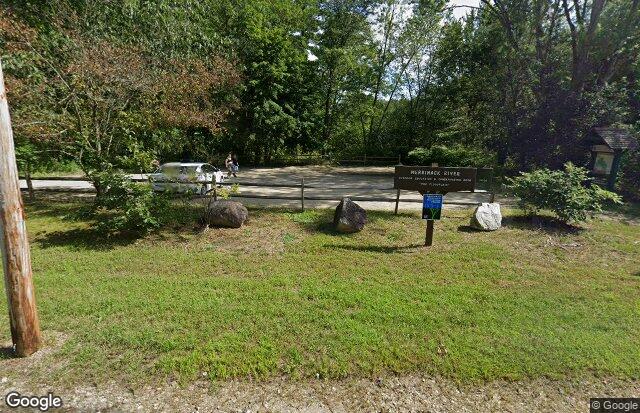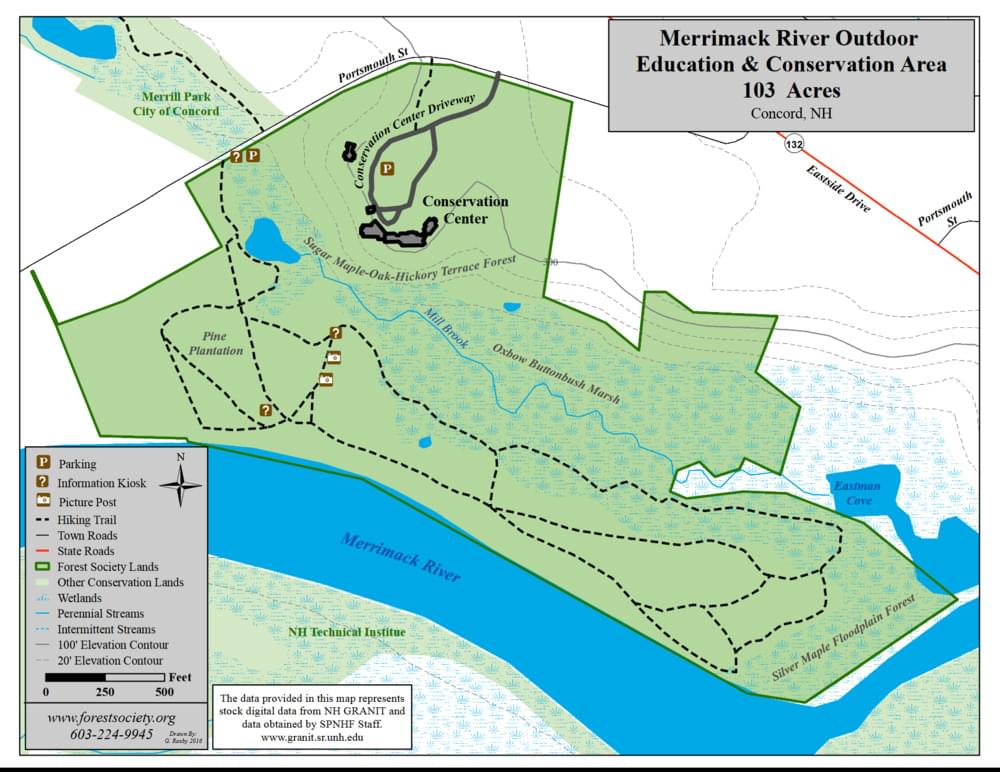
Merrimack River Conservation Area
Merrimack River Conservation Area
Society for the Protection of New Hampshire Forests Concord, New Hampshire 03301
Official WebsiteMerrimack River Conservation Area map
Tips for Birding
Merrimack River Conservation Area is located in East Concord. From I-93 exit 16, go east on West Portsmouth Street 0.1 mile, bearing right very briefly onto NH-132, then left onto East Side Drive. Go 0.7 mile, and turn right on Portsmouth Street, and go .4 mile to the bottom of the hill (past the entrance to the headquarters of the Society for the Protection of New Hampshire Forests) to the parking area and trailhead on the left. You have to walk left out of the lot along the road about 30 feet to the beginning of the yellow-blazed trail.
Merrimack River frontage, backwaters, and marshes. Tree plantations and flood plain woodlands. 1.25-mile Les Clark Nature Trail loops through all habitats. The Forest Society headquarters (web site) has restrooms, exhibits, and a gift shop. Note: Access to the trails from the Forest Society HQ via the long stairway down the hill is now closed–the bridge across the creek is gone and that area is now designated a wildlife sanctuary.
Birds of Interest
Spring/summer/fall birding. Bank, Barn, Northern Rough-winged, and Tree Swallows along the Merrimack River bank. Red-bellied, Hairy, and Downy Woodpeckers in the flood plain woods. Belted Kingfisher, Spotted Sandpiper, and waterfowl in the marshes and river shore. Warblers, flycatchers, and other passerines in the woods and streamside.
About this Location
Several types of floodplain forest natural communities may be seen along the trail system below the Forest Society’s headquarters, including one near the river’s edge that is dominated by tall silver maples leaning over the river (this is a portion of an exemplary silver maple – false nettle – sensitive fern floodplain forest that occurs in patches along the banks of this stretch of the river). Other natural communities found here include a hardwood terrace forest dominated by sugar maples, oaks, and hickories, as well as marshes, ponds, and streams.
Content from Official Website
Last updated October 31, 2023

